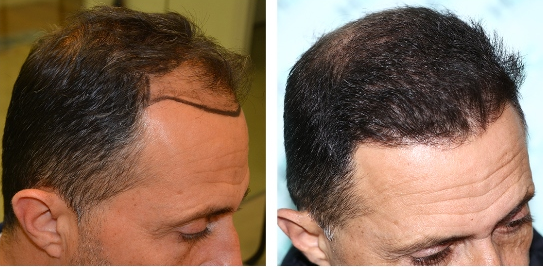You might be searching for hair transplant results month by month. You will be satisfied. Plenty of clinics in the world offer a month-by-month look at how your cosmetic surgery is doing. This way, you can tabs on your hair as well as how good it looks on you. How does a hair transplant even work? The surgeon takes some hair from a part of the scalp where it is thicker. Then he grafts it onto the part which has thinning hair. It is an extremely popular cosmetic surgery. Let us know more about the efficiency and procedure.
Do They Even Work?
This is the most important question that plagues would be receivers of a hair transplant. The easy answer is yes. A hair transplant will provide you with more benefits than your average over-the-counter hair treatment products. Research has shown that 80% of the transplanted hair grows back in a matter of months. However, you must know that even transplanted hair thins over time because after all, it is hair. Another important fact to keep in mind is that transplants do not work for everyone. Thus, choose with care.
Costs of a Hair Transplant
Always remember that a hair transplant can burn a hole right through your pocket. It is not a very cheap process. A hair transplant will cost you anything between $ 4,000 to $ 10,000 every session. As you can see, it is not a procedure that can be afforded by one and all. Only go to a surgeon if you are sure you have the big bucks to afford it. Once again, it does depend on a variety of factors. Availability of surgeons in the area, surgical techniques and the experience of the surgeon. Take all factors into consideration.
The Procedure of a Hair Transplant
This is the most simple definition you will find. In a hair transplant, the surgeon removes hair from the part of the scalp which is dense. Then he very carefully places it on the part that has thinning hair. The surgeon will sterilise the area which is about to receive the graft. If you find the process uncomfortable, you can also request sedation. Staying put out the whole way is definitely easier than remaining awake and watching the entire thing unfold. Once you are done, the surgeon will perform one of two surgical procedures.
Follicular Unit Transplantation
This is the most common and widely used process of hair transplantation. Let us explain what happens in it in simple terms. The surgeon will first cut a strip of skin from your scalp that is dense in hair. After that, he will divide it into much smaller fragments and graft very carefully onto the affected part. Each fragment may contain up to one strand of hair only. After that the surgeon closes the surgical site with strips of bandages or gauze. You may opt for this method as it is quite safe when done by an experienced person.
Follicular Unit Extraction
This is another variety of hair transplant which uses a different method for grafting hair. The first thing the surgeon does is shave the back of your head. After this, individual follicles of hair are taken out from the scalp. You can even see marks where each follicle was pulled out. After this the surgeon moves on to the affected portion of the scalp and makes small holes there. Each follicle is then transplanted with great care onto the scalp. The process takes some time but yields rather good results in the long run.
Recovery
Both surgeries might take some days to complete. You must exercise patience when it comes to this. Since surgery is much better than over-the-counter treatments, you must wait for the results to show themselves. There is also the likeness of feeling sore or irritable in the days following the surgery. Your doctor might prescribe some medicines to keep the pain down or the irritation at bay. Make sure you follow them judiciously and do not wash your hair for the first few days. Use only mild shampoos after you decide it is the right time to begin caring for your hair.
Side Effects
As with all other cosmetic surgeries, hair transplants have their own share of side effects. For starters, you might feel a sharp itch on the scalp during and after the process. Sometimes a crust can also form over the affected area, and there might also be some amount of bleeding. Hair transplant and smoking may also have a negative relation. For a very short amount of time, you will also feel no sensation in the area that is being operated upon. These side effects can be averted with a little caution. Hair transplants remain one of the best methods to solve scalp-related issues.

